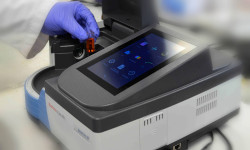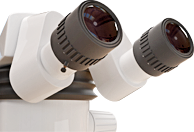UV and Visible Spectrophotometry
 Ultraviolet - Visible Spectrophotometry UV-Vis is one of the techniques used for the identification and quantification of chemical substances. Ultraviolet - visible spectroscopy is widely used analytical technique and is applicable to vast range of materials and substances.
Ultraviolet - Visible Spectrophotometry UV-Vis is one of the techniques used for the identification and quantification of chemical substances. Ultraviolet - visible spectroscopy is widely used analytical technique and is applicable to vast range of materials and substances.
Applications of UV-Vis
- Corrosion / interaction monitoring of metal impurities of etchant solutions.
- Active ingredients monitoring in drug production and drug samples.
- A surfactant’s/wetting agent’s critical micelle quantification, to provide the maximum wetting affect and detecting addition requirements.
- Effluent investigation such as detecting the removal of chromium metal.
- Impurities investigations on metals (iron, magnesium and copper) and chemical process byproducts (such as nitrates, nitrites, phosphates, sulphites and sulphates) that could be identified and quantified in a matrix.
- Leachable and extractables investigations. Potential plasticiser leachable such as Di (2-ethyl hexyl) phthalate (DEHP) used in production of various poly-Vinyl Chloride (PVC) medical tubing.
- Using reagent derivatisation methods to identify inorganic metal contamination contaminations or amine and ketones presence in solution.
Colorimetric Measurements:
- Dye concentrations such as brilliant green and aquamarine blue in solution, Colour intensity measurements that relate to concentration of chemical species, Colour identification to replicate dyes.
- Colour intensity of oils relating to quality and condition.
- Iodine concentration measurements.
Kinematic Measurements:
- Assessment of the rates of chemical reaction in solutions.
Purity Measurements.
- Detecting contaminants in pure solutions and chemicals.
- Inhibitors such as TBC in styrene.
Organic Materials Analysis:
- Pharmaceuticals testing – Drug identification and quantification.
- Plastics and Polymers testing – Graphene dispersion in solution leaching plasticizers out of plastics.
- Industrial oils and Petrochemicals testing – Oil condition investigations.
Inorganic Materials Analysis:
- Chromium (VI) testing – Cr on metal conversion coatings and Cr(VI) leaching and identification in water or immersion liquids.
- Disinfecting agents and chemicals such as hypochlorous concentration within a matrix.
- Metal contamination testing of etchant solutions.
- Surfactants and wetting agents testing that increase the wetting ability of cleaning and etching processes.
Principles of UV - Visible Spectrophotometry
Certain chemical compounds absorb energy from the wavelengths of UV and/or Visible light, causing the excitation of electrons of the compound. The absorbance from a UV/visible light source, passing through a chemical compound can be measured as a response. The detected response is unique to the structure of the compound, providing possible identification information, whilst a calibrated method can provide quantitative data.
Features of Laboratory’s UV-Visible Instrument:
Thermo Scientific™ GENESYS™ 50 UV-Visible spectrophotometer offering: -
- Dual beam scanning spectrophotometer.
- Cover a range from 190 to 1100 nm.
- Relatively fast data generation.
- Non-destructive testing.
- Ideal for identification, quantitation, method development and research.
- Colorimetry analysis.
Our site expert on UV/Vis Spectrophotometry is Kim Nickson
Please contact us to discuss how your requirements can be met using this or any of our analytical techniques. We can issue no-obligation quotations once we have discussed your needs and can offer two levels of service “urgent” and “normal”. We also offer preferential rates for longer term analysis contracts. Click here to find out more.

